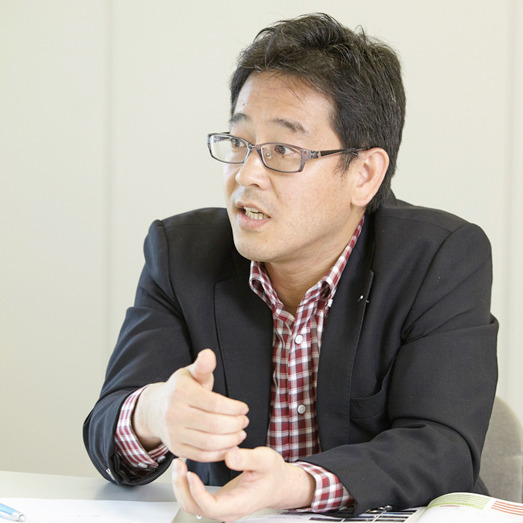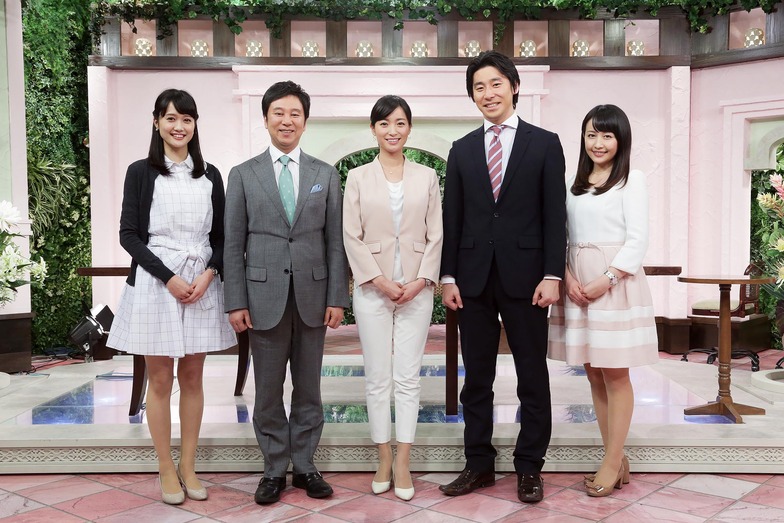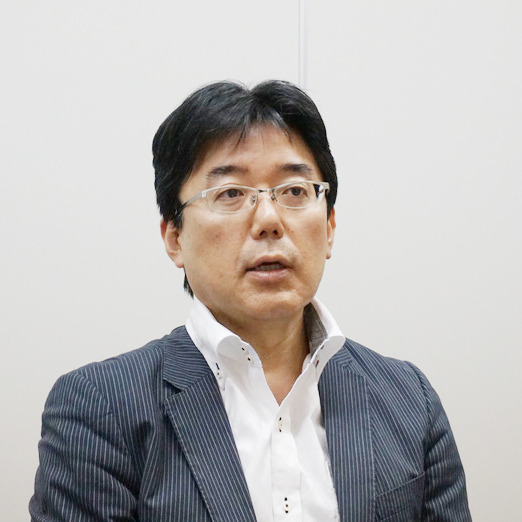Note: This website was automatically translated, so some terms or nuances may not be completely accurate.
Telling Your Own Story and Expanding Your Business B2B Companies: Proactive Communication

Following the Lehman Shock, B2B companies saw a sharp decline in advertising spending. However, their revenues gradually recovered afterward, and spending increased. Perhaps aided by the effects of Abenomics, fiscal 2014 saw the highest advertising spending on record. Why is communication among B2B companies becoming more active? We explored the "now" of this phenomenon.
[Part 1] From the Marketing Front Lines

How to Communicate Your Company's Social Value
Kishimoto: The objectives of the increasing number of B2B company advertisements can be broadly categorized into four main areas. First, to communicate the industry's or their company's advanced nature and growth potential. Second, to target entry into new fields using their proprietary technology. Third, to highlight how their core technology benefits society, emphasizing the CSR aspects of their core business. Fourth, when talent acquisition is a challenge. What are your thoughts on the background behind this increase in such communication?
Minami: With innovation being a key requirement for Japan's growth strategy, there's a growing momentum for proactive investment. Companies believe that aggressively applying their technologies to growth areas will expand business opportunities. While existing customers can be approached through trade shows and sales efforts, reaching potential customers requires different methods. B2B companies inherently sell not just products, but rather technological capabilities—their potential. In entirely new fields or when the application areas of technology are evolving, it's not enough to just develop new customers on their own; they need to be "discovered" as new partners. That's where advertising becomes highly meaningful.

Chief Marketing Planner, Marketing Creative Center Joined Dentsu Inc. in 1999. Worked in the Marketing Planning Department, handling new product development, business consulting, and communication strategy planning.
Also involved in developing BC-MAP, a communication diagnostic tool for BtoB companies.
Kishimoto: To reveal a B2B company's technological capabilities and potential, it's necessary to show future partners exactly what that technology is used for and how it benefits them.
Minami: Additionally, stakeholders increasingly prioritize societal engagement, fueling a growing desire to more actively communicate their social presence. How advanced is the technology a company boasts? Furthermore, what level of social value does it generate? Communicating this broadly to society becomes the catalyst for expanding business opportunities. Considering the broadening audience we need to reach, clear and understandable communication is essential.
Communication that Attracts "People, Products, and Capital"
Kishimoto: Recruitment is also a major challenge for B2B companies. Generally, students don't easily grasp what B2B companies do unless they research them in detail.
Minami: What students care about now is being able to envision their future with the company and ensuring it's not a so-called "black company." Establishing solid touchpoints and communication with students is crucial. Furthermore, as the "Internet of Things" (IoT) advances, connecting everything to the internet, and as the very methods of manufacturing undergo significant change, the type of talent needed will also evolve. In that sense, gaining societal understanding of the direction a company aims for is also important.
Kishimoto: Innovation naturally requires funding. I imagine B2B companies also hope their advertising will make a favorable impression on investors.

Professor, Graduate School of Business Administration, Kobe University. After graduating from Kobe University in 1984, she earned a master's degree in Communication from Michigan State University and a doctorate from Kobe University's Graduate School of Business Administration. Following a position as Associate Professor at Yokohama City University's Faculty of Commerce, she has held her current position since 2004. Her specialty is marketing. Major publications include
*Industrial Goods Marketing* (co-authored, Yuhikaku), *Service Innovation: Co-Creating Value and Introducing New Technologies* (co-authored, Yuhikaku).
Minami: Even in areas experiencing technological innovation, such as artificial intelligence, robotics, and sensors, investors scrutinize whether the companies they invest in can truly execute their growth strategies. That's where effective communication becomes essential.
Kishimoto: To summarize, communicating a company's social value—its innovation, social impact, and growth potential—creates touchpoints with potential customers and generates information for business matching. This also aids in recruitment support and fundraising from investors. So, B2B advertising plays a significant role in attracting the management resources of "people, products, and capital." Japan faces challenges as a society with a declining birthrate and aging population, coupled with energy issues. Globally, it's a pioneer in tackling these problems. By leveraging the power of communication to solve these challenges, opportunities arise to take the results overseas.
Minami: Exactly. It's not just about making and selling products. We must pursue how to provide "value" to society through business development, while also exploring new combinations of various resources.
B2B advertising carries a meaning very close to "management."
Kishimoto: Traditionally, Japanese B2B companies could expect a certain level of growth by dealing with a limited number of customers. However, after the Lehman Shock, that model collapsed, forcing them to find new customers. Alternatively, they had to create new business systems to survive. Amidst this, the economy has finally started to improve gradually. That's why communication from B2B companies has increased.
Minami: When the areas you want to target change, you also have to change your corporate image and the business itself. That's precisely why communication to gather "people, resources, and capital" – to gain understanding of your company's technology and its social value – becomes crucial. Stock prices will likely react sensitively to this too.
Kishimoto: I found it characteristic that B2B advertising is very closely tied to corporate management itself. Thank you very much.
[Part 2] From the Production Floor of an Economic News Program
Now is the Time for New Brand Strategy Opportunities

The concept behind the program "World Business Satellite" is "economic news that connects to you." Therefore, the reality is that we have often featured B2C companies that are familiar to viewers. However, against the backdrop of an improving economic climate, more B2B companies are actively communicating information for various purposes, such as securing better talent now. Furthermore, even companies generally perceived as B2C are showing strong moves to strengthen their B2B business segments. Looking at the industry as a whole, there's a clear impression that information dissemination in the B2B sphere is intensifying.
World Business Satellite is also strengthening its B2B coverage, for instance by launching a new segment called "Japan's Material Strength." When we feature how innovative material technologies or highly competitive technologies benefit society, we consistently see positive ratings. Japanese B2B companies possess numerous products and technologies competing at the global forefront, and we are often amazed during our reporting visits. I believe this content is also highly visually compelling.


TV Tokyo "World Business Satellite" Producer
Joined Nikkei Inc. in 1989. Covered overseas expansion and corporate bankruptcies of major Japanese companies at the Nagoya Branch and the Consumer Industries Department (now Corporate News Department) at headquarters. Transferred to TV Tokyo in 2008. Assumed current position in April 2014.
B2B companies have traditionally been seen as lacking in public relations, but recently, companies have become very proactive in disclosing their technological capabilities. Furthermore, through my reporting, I feel that communication has developed between PR personnel and the field, which in turn is likely increasing exposure opportunities. To further strengthen their presence in the communications field going forward, they will need to enhance their information dissemination capabilities. This includes not only their business scope but also promoting the appeal of B2B business and highlighting their status as highly profitable companies. I also believe a strategy where top management appears in the media to build corporate branding is viable. The fact that their public recognition is still relatively low should be seen as an opportunity for new brand strategies.
It goes without saying that B2B companies hold significant weight within the Japanese economy. As a producer of economic news programs, I hope to increase opportunities to feature them, carefully balancing coverage with B2C companies while drawing on diverse insights.
[Part 3] From the Creative Production Front
"
"
Three Key Points to Keep in Mind
Through handling creative work for various B2B companies, I've come to believe that what's crucial for corporate communication can be distilled into roughly three key points. This time, I'll introduce these essential points alongside concrete examples.
The first is communicating the company's scope and business domain. For example, Ishida uniquely expressed its signature product technology, "foreign object detection devices," through a distinctive commercial (Photo ①). This conveyed the societal need for the technology and its high level of technical capability. Similarly, Kaneka incorporates its company name into the catchphrase "A company that fulfills wishes through science," while communicating its science-based business domain and corporate philosophy (Photo ②). For B2B companies that aren't necessarily household names, it's essential to convey not just the company name, but also "what the company actually does" to gain viewer understanding and acceptance.

Copywriter, Kansai Promotion & Design Bureau, Dentsu Inc. Kansai Branch
Joined Dentsu Inc. in 1999. Integrates communication strategy planning with the development and production of visual, graphic, web, and promotional expressions. Possesses extensive experience and expertise in the B2B domain.
The second is creating frames with breadth and depth. Murata Manufacturing has developed initiatives like the "Murata Manufacturing Cheerleading Club," visualizing and personifying its own technologies as the core of its corporate communications. This approach goes beyond simply showcasing technical prowess in commercials (Photo ③); at events like trade shows, it also generates significant crowd-drawing effects, with attendees flocking to see these displays. Additionally, Nitto, a sponsor of the Osaka International Women's Marathon, links its activities not only through company name exposure on race bibs and commercials aired during broadcasts but also through internal branding initiatives (employee marathon participation, event volunteering, company events involving families, etc.). In this way, while commercials serve as the core, maximizing impact and effectiveness is achieved by organically linking various initiatives.
The third element is continuity. Asahi Kasei's "Things the world didn't have until yesterday." series, which presents solutions to various social issues using the company's products and technologies, already includes 14 commercials alone (Photo ④). By conveying a single message through the accumulation of individual "facts," it impressively leaves an impression of the company's stance contributing to the lives and livelihoods of people worldwide. Frankly, it's difficult for a B2B company to convey its true nature in one leap. Therefore, this kind of continuity can be said to be a crucial key to communication.




Was this article helpful?
Newsletter registration is here
We select and publish important news every day
For inquiries about this article
Author

Kishimoto Wataru
Dentsu Inc.
Marketing Creative Center
Chief Marketing Planner
Joined Dentsu Inc. in 1999. Worked in the Marketing Planning Department, where responsibilities included new product development, business consulting, and formulating communication strategies. Also engaged in the development of BC-MAP, a communication diagnostic tool for B2B companies.
Articles by this person

Takashi Tsujimoto
Dentsu Inc. Kansai Branch
Kansai Promotion & Design Bureau
Copywriter
Joined Dentsu Inc. in 1999. Integrates the entire process from communication strategy planning to the development and production of visual, graphic, web, and promotional content. Possesses extensive experience across a wide range of tasks and is well-versed in the B2B sector.
